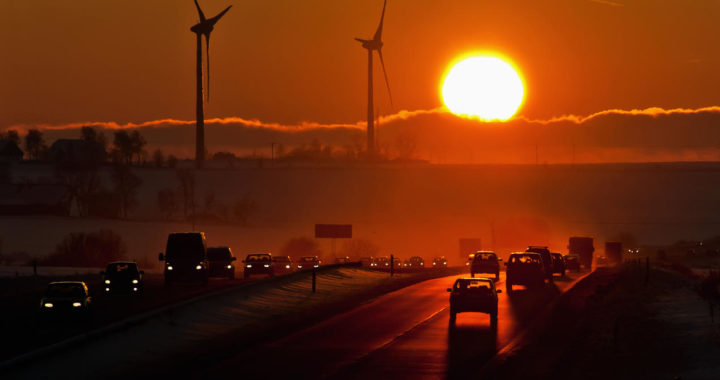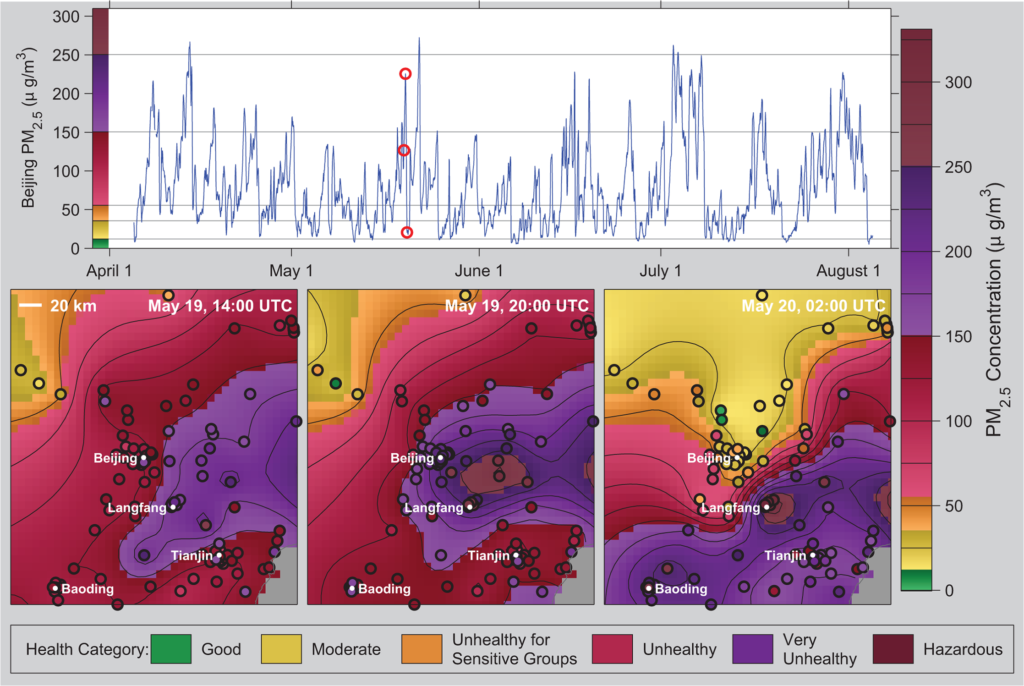Climate Context
The widespread scientific consensus concludes that there has been a measured, unnatural global warming that human activities “are the dominant cause of since the middle 1900s” [5]. This increase in the average temperature will inevitably lead to catastrophic global disaster in the fast approaching future. The options for the survival of the world as we know it demand exhaustive changes to our energy sources, and a drastic decrease in the pumping of greenhouse gasses (GHGs) into our atmosphere.
While the impact of climate change will not be entirely negative across the world, there are enough environmental and economic factors to predicate the immediate slowing and reversal of global warming. The ecological loss of biodiversity as ecosystems are destroyed is an ongoing tragedy by our own hands, yet it is only the backdrop for what is unfolding. Some farming regions will experience longer growing seasons for their crops, while in other regions, homes will flood under the oceans. An increase in the intensity and frequency of hurricanes or droughts has ravaged communities, and the arctic-as-we-know-it is melting, on the way to lose all of its ice [16]. Ultimately the regional changes, rise in sea levels as ice melts, and intensified natural disasters will increase the economic costs of handling the climate’s change at the micro and macro levels. Cities will be submerged, with some models predicting that “[under] high emissions… up to 630 M(million) people live on land below projected annual flood levels for [the year] 2100, and up to 340 M for mid-century,” leaving hundreds of millions of displaced refugees to saturate the world from every coast: a humanitarian crisis on an unprecedented scale [10]. The cost of any aid will increase exponentially for communities responding to stronger-than-ever natural disasters while they rebuild their lives at the threat of the ever-worsening climate. Hurricanes and “tropical cyclones are the most costly of the weather and climate disasters,” and are simultaneously increasing in most measures of cost and danger with their “intensity, frequency, and duration as well as the number of strongest (Category 4 and 5) storms” surging since the 1980s [3,7].
A Lacking Response
Though the effects of climate change that were predicted decades prior are already happening, green movements continue to face great opposition despite the global catastrophe unfolding. Climate scientists have been raising the alarm about the immediate need for change for decades, largely ignored. This is despite the “causes and impacts [of climate change] increasing rather than slowing down,’ [according to] WMO Secretary-General Petteri Taalas… co-chair of the Science Advisory Group of the UN Climate Summit,” which reflects some level of global apathy or misunderstanding of the dire nature of the issue [9]. The response to climate change needs to be a unified, international one, with all peoples mobilizing whatever ability they have to reverse its effects, independent of whom the most responsibility falls on for the arrival to the current predicament [18]. Still, even voices within the green movement are hindering its multifaceted efforts to reduce the output of greenhouse gases into the atmosphere and halt global warming. The approach must consider all options available to us now in order to give the world as we know it, and all who inhabit it, its best fighting chance for survival.
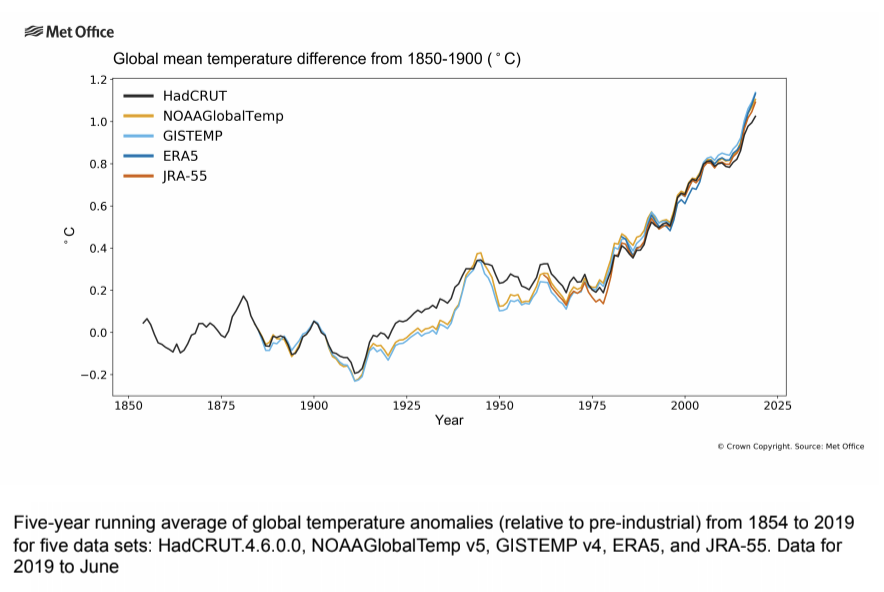
Concerns and Contradictions
Contradictory positions for green energy can be seen in media pieces like Karen Charman’s article “Can Nuclear Power’s Deadly Waste Be Contained in a Warming World?”, where she positions herself as an environmentalist while maintaining a position that does more harm than good in the fight against global warming. The article posits many legitimate concerns that need to remain at the forefront of the nuclear field if it is to grow to meet global energy needs. However, with no alternatives suggested, and the far more detrimental impacts of the current use of fossil fuels ignored throughout, articles like these lend to grinding the momentum of activists trying to end global warming to a crawl, further allowing each day to pass and the crisis to worsen.
Discussion about nuclear mishaps and unethical management is counterproductive when presented in a vacuum as Charman does in this article. Identifying and empathizing with the harm done to people like “Becky Mease… and her family during and after the partial meltdown at Three Mile Island on March 28, 1979,” are cornerstones of progressive and green movements [4]. All the endeavors to halt climate change are trying to prevent a situation that will exponentiate global suffering. The pain and accompanying fear of blameless victims must be held close to any activist’s heart; the history of and possibility of future preventable disasters serve to increase the culpability of each proponent of their respective fields to do everything in their capability to serve the wellbeing of all life, to mitigate risk, and provide for the needs of the many. Each environmentalist has a responsibility to be educated about our best present path to stave off the irreversible damage and death from climate change. Charman identifies that global climate change will prove to be catastrophic, but posits that the, comparatively meager, health impacts of nuclear accidents are equivalent to the impending global humanitarian crisis. With so much at stake in the coming future, the already highly regulated and presently capable nuclear-power-industry must remain an integral facet in the furniture of the green energy industry.
2011 in Japan: Fukushima & Onagawa
Having acknowledged the urgency, and despite no other feasible options, Charman goes on to use the Fukushima Daiichi accident as an example to “[demonstrate] the vulnerability of nuclear power plants to” the world’s increasing rate of “climate-fueled megastorms and other disasters,” [4]. Earthquakes are not strengthened by climate change, however the melting ice and global rising sea level “would dramatically increase the frequency of tsunami-induced flooding incidences,” which pose a greater risk to coastal power plants [11]. For example, in March of 2011, a tsunami from the Pacific ocean washed over the reactor facilities in the Fukushima nuclear plant and disrupted its operations. With its electrical capabilities and back up generators flooded, cooling of the many reactor cores was not possible. The cores melted, nuclear materials leaked, and the contaminated waters and particulates filled inland from the coast.
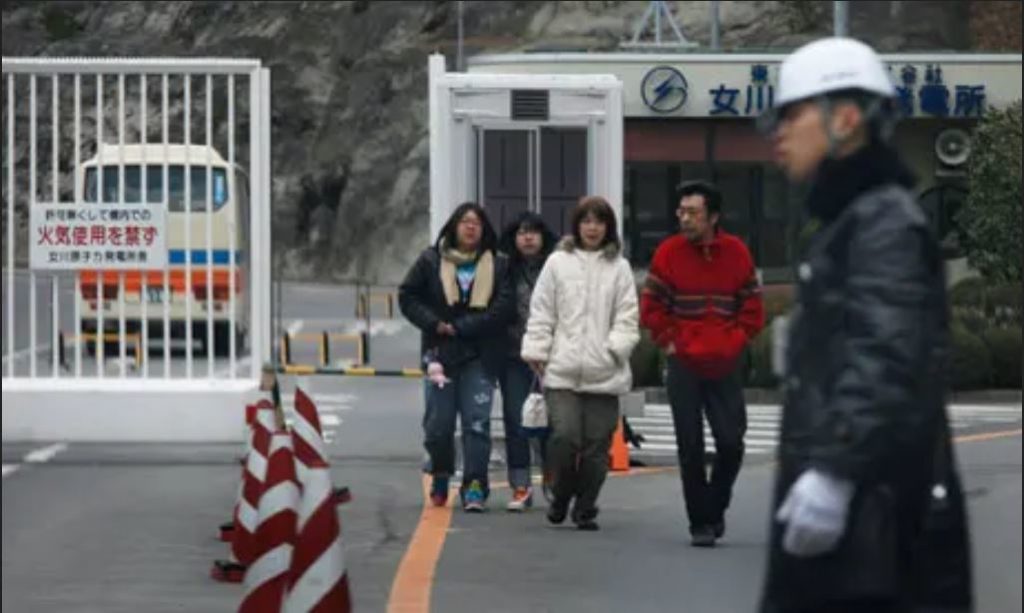
Tsunami survivors outside the Onagawa nuclear power station where they have been sheltering. Photograph: Vincent Yu/AP
Despite this, radiation played no role in the cost of human life compared to the deadly 15-meter (49 feet) tsunami, and even the resulting evacuation deaths. Following this, the public’s perceived risk of nuclear power soared, and their demands to cease the reactor operations at Fukushima resulted in the “’cold shutdown condition’ announced in mid-December,” [8]. However, as a counter example, 75 miles North of the Fukushima accident is a nuclear reactor facility in Onagawa which sheltered hundreds of nearby citizens from the same tsunami. Its walls were constructed “to withstand nine metre high tsunamis compared with Fukushima’s 5.4 metre limit,” saving many locals and providing energy and amenities through their crisis[13]. With the proper investments and risk analyses, future and updated reactor facilities can withstand the increasingly powerful climate-fueled disasters, as well as bring awareness and thanks to the local life-saving facilities, like in Onagawa.
Calculating Risk
Charman continues on to quote risk reports from highly credible national labs as evidence of the threat of nuclear power. There is no data regarding the aftermath of the accident that supports the magnitude of fear Charman is conveying in her argument. Instead, the numbers she quotes are purely theoretical; the extremely thorough risk reports from labs like Sandia National Lab and Brookhaven National Lab are done to predict the likelihood and weigh the impacts of potential disasters. The figures that Charman brings up do less to put into perspective about their meaning within the integral context of the deadly fossil fuel industry, but rather serve to fearmonger a skewed version of reality where a nuclear-powered future is filled with vulnerable reactors, standing ready to spit radioactive waste into the environment at any point. Charman mentions statistics from the risk reports, like one about an extremely unlikely core meltdown that “could kill 100,000 people within a year, result in 40,000 subsequent cancer deaths and give another 70,000-75,000 people a range of radiation-related injuries,” which are unfortunately accurate. The scale of the numbers presented is unnerving[4]. Reality demands that risk of harm or death be taken into consideration, however low the probability; the comprehensive nature of the risk reports are necessitated by the history of reactor accidents, which has created a stringent practice that has incomparably improved the safety and reliability of the industry over the decades.
The purpose of performing any risk calculation lies in all of the possible scenarios being taken into consideration, with as many simulations performed and models fleshed out as can be reasonable. This data is used in the design basis for all reactors to ensure the best power production and lowest risk to the public, to the highest standards upheld industry wide and kept in check by extensive legislation and bureaucratic inspection agencies. Such is the duty of the field, and the public outcry and well-circulated fears in the media ensured it to be so; the safety of nuclear power should be held to a high standard, for all’s sake. Perhaps designers cannot avoid an unprecedented earthquake or freak core meltdown, but instead they can be modeled, predicted, and have every preventative measure taken to minimize possible ensuing harm. The knowledge of the risk empowers designers and engineers to build and operate the safest and most sustainable nuclear power infrastructure, addressing fuel processing, energy generation, nonproliferation, and waste storage to the benefit of all.
Charman is speaking to an audience that needs to be addressed in the climate movement. Positive public opinion of nuclear technologies has decreased since its advent, yet the need of it as “both a 24/7 baseload energy source like coal and natural gas, and also a low-carbon energy source like solar and wind” has become paramount to the success of the green movement [2]. Widespread support for a feasible green future is only possible when nuclear energy, in tangent with renewable energies, is embraced by the industry and the public. The public’s support, according to polls, is proportionally related with awareness; of those well informed of the safety, risk, and necessity of nuclear energy, “three times as many strongly favored nuclear energy (54 percent) as strongly opposed it (18 percent),” emphasizing the needed focus on responsible reporting, education, and fair representation from the media and our education systems [2].
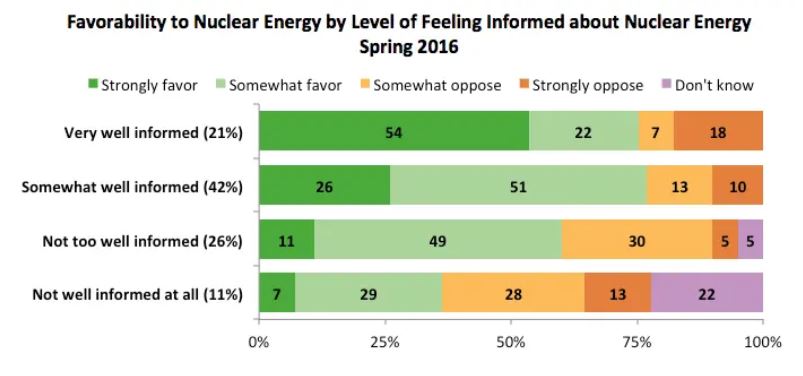
“Favorability to nuclear energy is closely correlated with the degree to which people feel informed about the topic. The more informed people feel, the more they favor nuclear energy. ” -NEI Fall 2016 National Public Opinion Tracking Survey Memo
Swaying investors is a discussion of economics, but the public’s support for “nuclear energy reflects a tradeoff people make between perceptions of need and safety concerns,” and it is important to approach the discussion with both our need and the associated risk at the forefront of it [2]. At the end of the day, some communities will need to voluntarily live near an operating nuclear plant, and education of the risks remains their strongest tool in standing for change. The public can look to modern implementations of large scale nuclear power, past concerns, and risk reports to evaluate the reality of what life and the associated costs are in a majority nuclear power consuming future.
Different Countries, Different Risks
In EU debates, the disagreement of France and Germany prompted discourse about their differing conclusions in the classification of nuclear power as clean. As discourse engaged, the German State Secretary for Energy, Andreas Feicht, claimed that “‘nuclear energy is [not] safe and sustainable nor cost-effective,’during a September meeting of EU energy ministers,” a position extended to policy as Germany rejected EU funding to invest in nuclear over safety concerns [1]. Germany decommissioned their reactors and reduced its national TWh consumption of nuclear energy. However, with the same electrical demand, and their focus on increasing energy consumption for solar and wind, but without a reliable clean baseload nor a long-term battery infrastructure, Germany had to increase their electrical consumption of GHG producing energy sources. Coal consumption increased from 22% in 2009 to 25% in 2015, while investment in natural gas as an alternative GHG producing fossil fuel went up 3% in 2018 from 2015 [14].
Though safety considerations determined Germany’s decision to halt nuclear energy production, an “economy ministry spokesperson put Russia’s share in German natural gas imports at ‘about 40 percent,’” a shaky ally to rely so heavily on while a GHG producing fuel accounts for a quarter of Germany’s energy use [17]. Meanwhile, the French Finance Minister embraced nuclear “‘in the ecological transition,’” stating that “‘[France] cannot achieve [their] goal in terms of combating global warming without nuclear energy,’” which reflected in their legislation [1]. France has increased the production and consumption of GHG-free nuclear power since the late 1970s, with a majority 37 % consumption from nuclear power, dwarfing their second largest source of energy consumption of oil at 32% [14]. The net positives of producing less GHG emitting energy now outweigh the cons of keeping the energy status-quo at great eventual cost to every life on the planet.The Real Biggest Risk
Another lacking essential piece of context to Charman’s piece is the current impact of the present-day energy industry on people and the environment, as carbon-emitting energy sources that power the capitalist machine destroy the environment at the cost of deadly human labor.
The fear from nuclear power risk assessments from national labs pale in comparison to the relative reality of the global energy industry, where their statistics are translated to unfathomable death in practice. Comparing the risk evaluation of nuclear plants to historical data, there are 100,000 deaths per TeraWattHour (TWh) for coal energy vs the 90 deaths per equivalent TWh for nuclear; for decades, despite being over 1,000 times more deadly, we continue to employ coal en masse, producing up to 28% of the world’s power to nuclear’s barely 5% globally [6]. As developing countries industrialize, their energy consumption increases, with “China’s per capita use [growing] by nearly 250 percent since 2000,” and their coal consumption topping over 22,000 TWh in 2018 [14]. Analysis of the country’s blanket of noxious emissions and other dangerous particulate matter, in search of its source, produced “measurements [that] reflect a combination of… [emissions previously] associated with coal (~90%) in power plants,” which are major contributors to the astounding “1.6 million deaths/year in China” due to air pollution, a whopping “17% of all deaths in China,” just from coal emissions [15].
The conventional global energy production worsens climate change every year, as the deaths of innocents stack and the consensus of our scientific forecasts worsen. The current practice and continued use of GHG producing fossil fuels is a threat to the livelihood of every person alive and will be the topmost threat to the coming generations, as denial of the vast dangers will become increasingly impossible to the greater consciousness of the public. The harm done and catastrophe to come greatly dwarfs any reasonable risks from implementing nuclear as part of a large-scale shift to non-carbon emitting energy sources. Charman portrays the acute suffering of at-risk peoples as an appeal to the pathos of her audience, but the divisive and short-sighted view and statistical vacuum only serve to assuage the urgency of the green movement’s need to utilize the available tools and save lives and our planet.
Direct Action for a Better Tomorrow
Though the world has experienced three (3) major nuclear accidents in Russia, Japan, and the United States, historically “nuclear power prevented an average of over 1.8 million net deaths” in replacing the power that would have been generated by GHG emitting sources “between 1971-2009” and preventing the associated deaths [12]. With accounting for the deaths resulting from those accidents, the use of nuclear power “amounts to at least hundreds and more likely thousands of times more deaths [prevented] than it caused,” still proving to be our best option now in this non-zero-sum game [12].

Mean net deaths prevented annually by nuclear power between 1971-2009 for various countries/regions. Courtesy of NASA
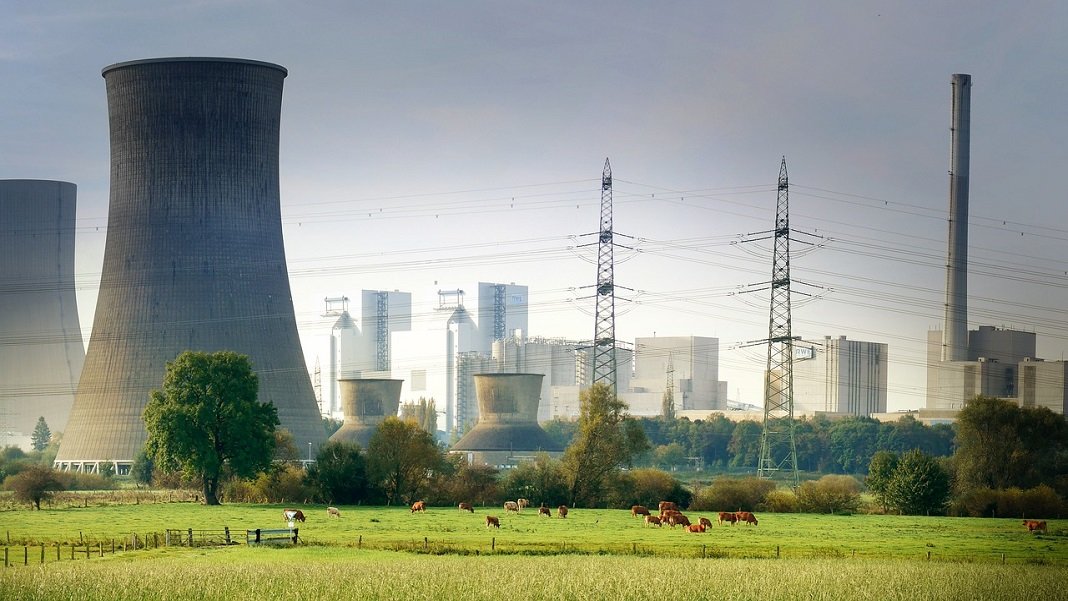
Albrecht Fietz -pixabay
References
- Barbière, Cécile. “Paris, Berlin Divided over Nuclear’s Recognition as Green Energy.” Www.euractiv.com, EURACTIV.com, 27 Nov. 2019, www.euractiv.com/section/energy-environment/news/france-and-germany-divided-over-nuclears-inclusion-in-eus-green-investment-label/.
- Bisconti, Ann S. “Public Opinion on Nuclear Energy: What Influences It.” Bulletin of the Atomic Scientists, The Bulletin, 27 Apr. 2016, https://thebulletin.org/2016/04/public-opinion-on-nuclear-energy-what-influences-it/#.
- “Calculating the Cost of Weather and Climate Disasters.” National Centers for Environmental Information (NCEI), 8 Apr. 2020, www.ncei.noaa.gov/news/calculating-cost-weather-and-climate-disasters.
- Charman, Karen. “Can Nuclear Power’s Deadly Waste Be Contained in a Warming World?” Truthout, 23 Sept. 2019, https://truthout.org/articles/can-nuclear-powers-deadly-waste-be-contained-in-a-warming-world/.
- “Climate Change – GSA Position Statement 10.” The Geological Society of America,Advanced Solutions International, Inc., www.geosociety.org/gsa/positions/position10.aspx.
- Desjardins, Jeff. “The Safest Source of Energy Will Surprise You.” Visual Capitalist, 17 June 2020, www.visualcapitalist.com/worlds-safest-source-energy/.
- “Extreme Weather.” National Climate Assessment, U.S. GLobal Change Research Program, https://nca2014.globalchange.gov/highlights/report-findings/extreme-weather#narrative-page-20985.
- “Fukushima Daiichi Accident.” World Nuclear Association, www.world-nuclear.org/information-library/safety-and-security/safety-of-plants/fukushima-daiichi-accident.aspx.
- “Global Climate in 2015-2019: Climate Change Accelerates.” World Meteorological Organization, 24 Sept. 2019, https://public.wmo.int/en/media/press-release/global-climate-2015-2019-climate-change-accelerates.
- Kulp, S.A., Strauss, B.H. “New elevation data triple estimates of global vulnerability to sea-level rise and coastal flooding.” Nat Commun 10, 4844 (2019). https://doi.org/10.1038/s41467-019-12808-z.
- Li, Linlin, et al. “A Modest 0.5-m Rise in Sea Level Will Double the Tsunami Hazard in Macau.” Science Advances, American Association for the Advancement of Science, 1 Aug. 2018, https://advances.sciencemag.org/content/4/8/eaat1180.
- “NASA GISS: Science Brief: Coal and Gas Are Far More Harmful than Nuclear Power.” NASA, NASA, www.giss.nasa.gov/research/briefs/kharecha_02/.
- “Onagawa: Japanese Tsunami Town Where Nuclear Plant Is the Safest Place.” The Guardian, Guardian News and Media, 30 Mar. 2011, www.theguardian.com/world/2011/mar/30/onagawa-tsunami-refugees-nuclear-plant.
- Ritchie, Hannah, and Max Roser. “Energy.” Our World in Data, 28 Mar. 2014, www.ourworldindata.org/energy.
- Rohde, Robert A., and Richard A. Muller. “Air Pollution in China: Mapping of Concentrations and Sources.” PLOS ONE, Public Library of Science, https://journals.plos.org/plosone/article?id=10.1371/journal.pone.0135749#references.
- “The Effects of Climate Change.” NASA, NASA, 9 June 2020, https://climate.nasa.gov/effects/.
- Wettengel, Julian. “Germany’s Dependence on Imported Fossil Fuels.” Clean Energy Wire, 19 June 2020, www.cleanenergywire.org/factsheets/germanys-dependence-imported-fossil-fuels.
- “Who Is Responsible For Climate Change? – Who Needs To Fix It?” YouTube. Kurzgesagt-In a Nutshell. 21 Jun, 2020, https://www.youtube.com/watch?v=ipVxxxqwBQw.

